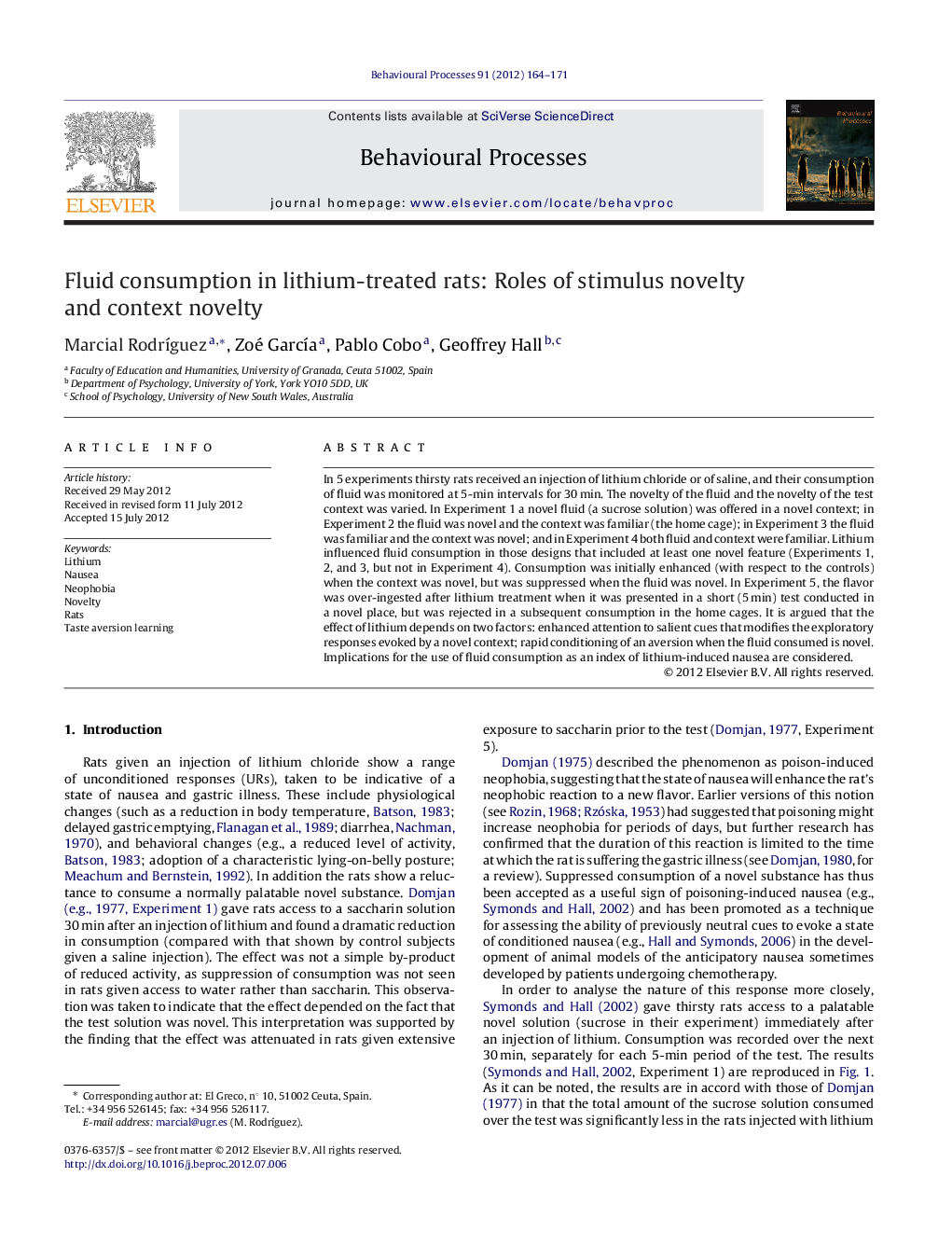| Article ID | Journal | Published Year | Pages | File Type |
|---|---|---|---|---|
| 2426990 | Behavioural Processes | 2012 | 8 Pages |
In 5 experiments thirsty rats received an injection of lithium chloride or of saline, and their consumption of fluid was monitored at 5-min intervals for 30 min. The novelty of the fluid and the novelty of the test context was varied. In Experiment 1 a novel fluid (a sucrose solution) was offered in a novel context; in Experiment 2 the fluid was novel and the context was familiar (the home cage); in Experiment 3 the fluid was familiar and the context was novel; and in Experiment 4 both fluid and context were familiar. Lithium influenced fluid consumption in those designs that included at least one novel feature (Experiments 1, 2, and 3, but not in Experiment 4). Consumption was initially enhanced (with respect to the controls) when the context was novel, but was suppressed when the fluid was novel. In Experiment 5, the flavor was over-ingested after lithium treatment when it was presented in a short (5 min) test conducted in a novel place, but was rejected in a subsequent consumption in the home cages. It is argued that the effect of lithium depends on two factors: enhanced attention to salient cues that modifies the exploratory responses evoked by a novel context; rapid conditioning of an aversion when the fluid consumed is novel. Implications for the use of fluid consumption as an index of lithium-induced nausea are considered.
► Lithium administration can suppress or increase subsequent fluid consumption. ► The effect depends on both the novelty of the fluid and the novelty of the context. ► Increased consumption reflects enhanced attention to fluid-related cues. ► Suppressed consumption reflects rapid acquisition of conditioned taste aversion.
